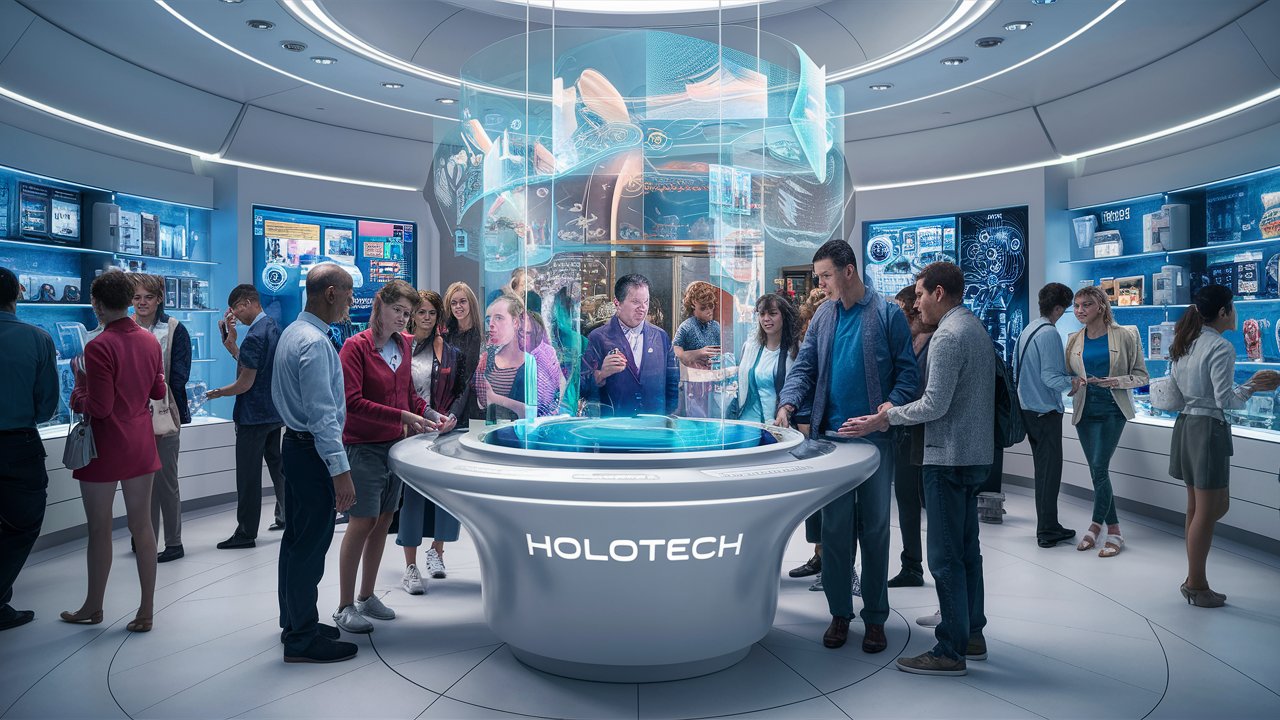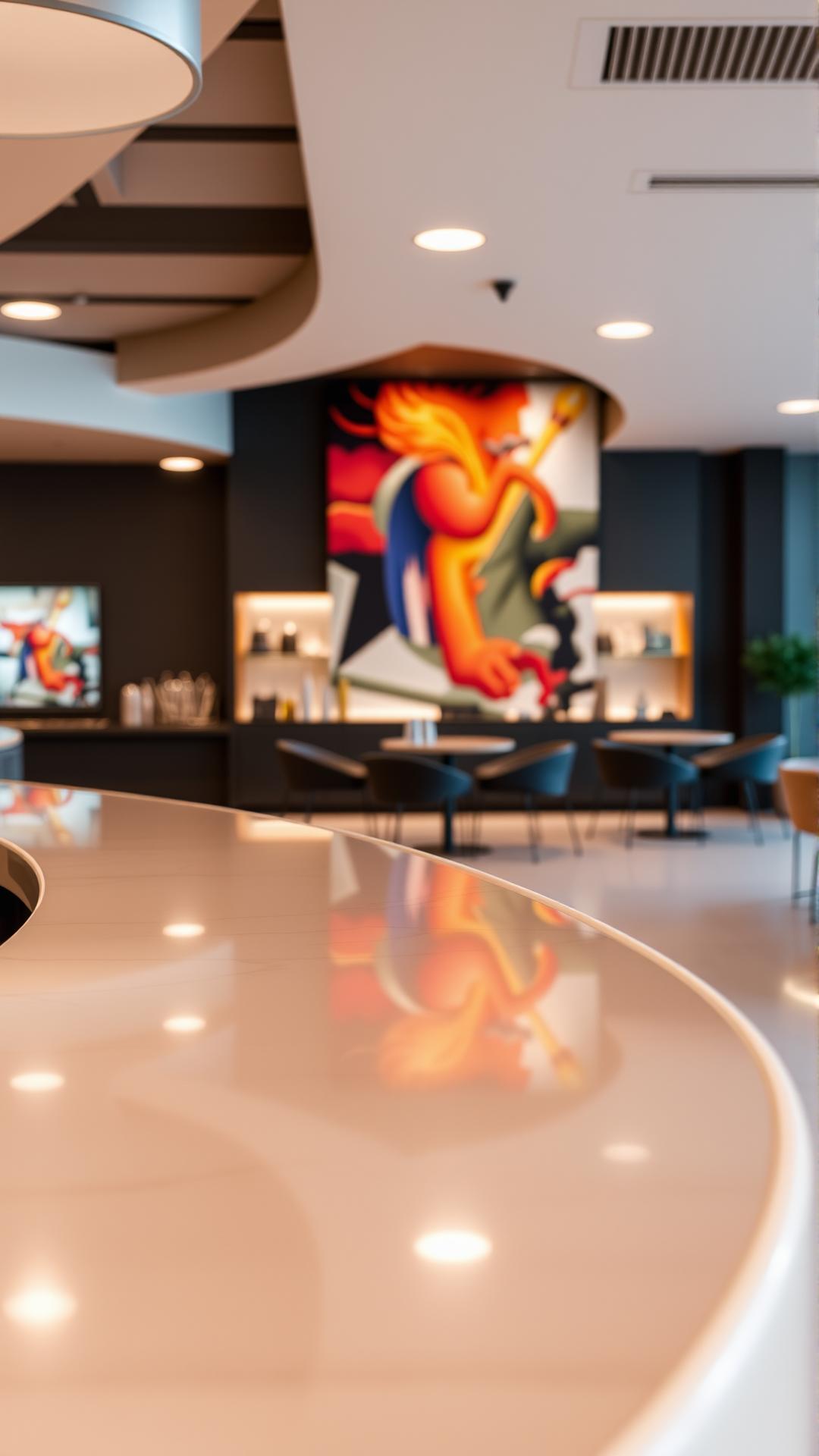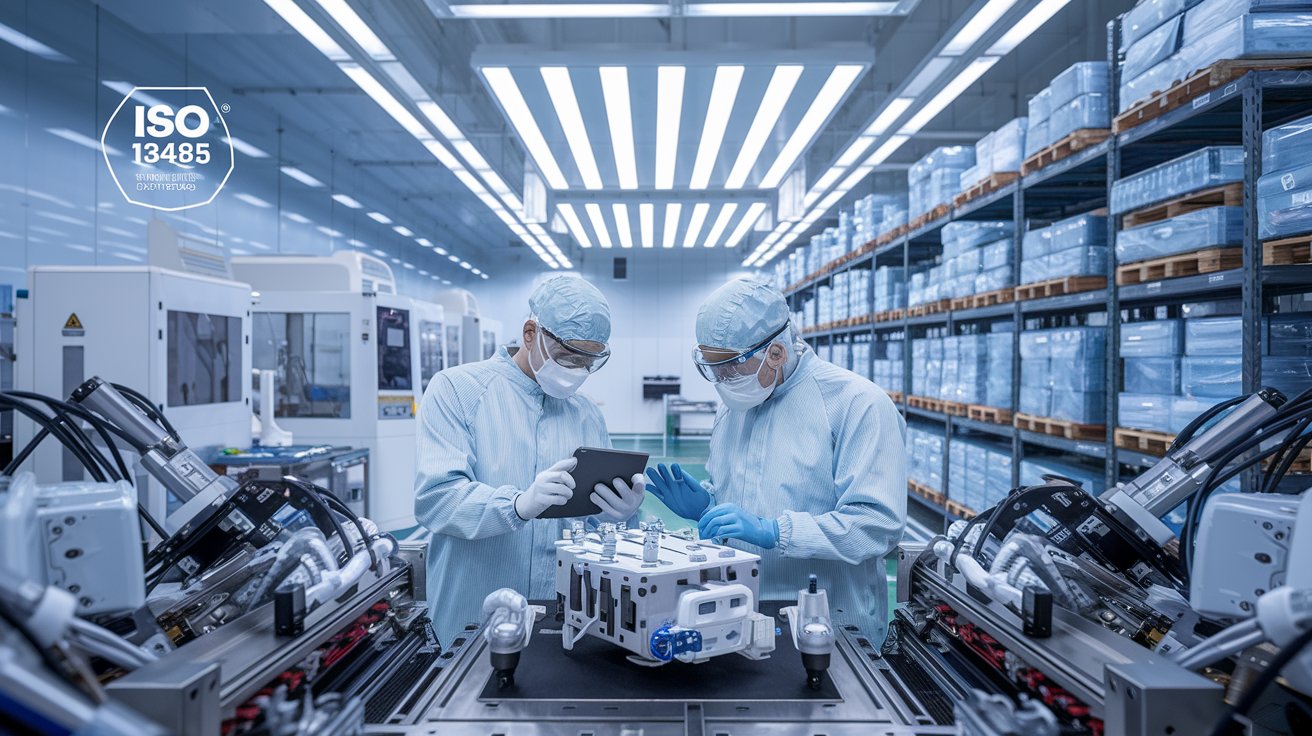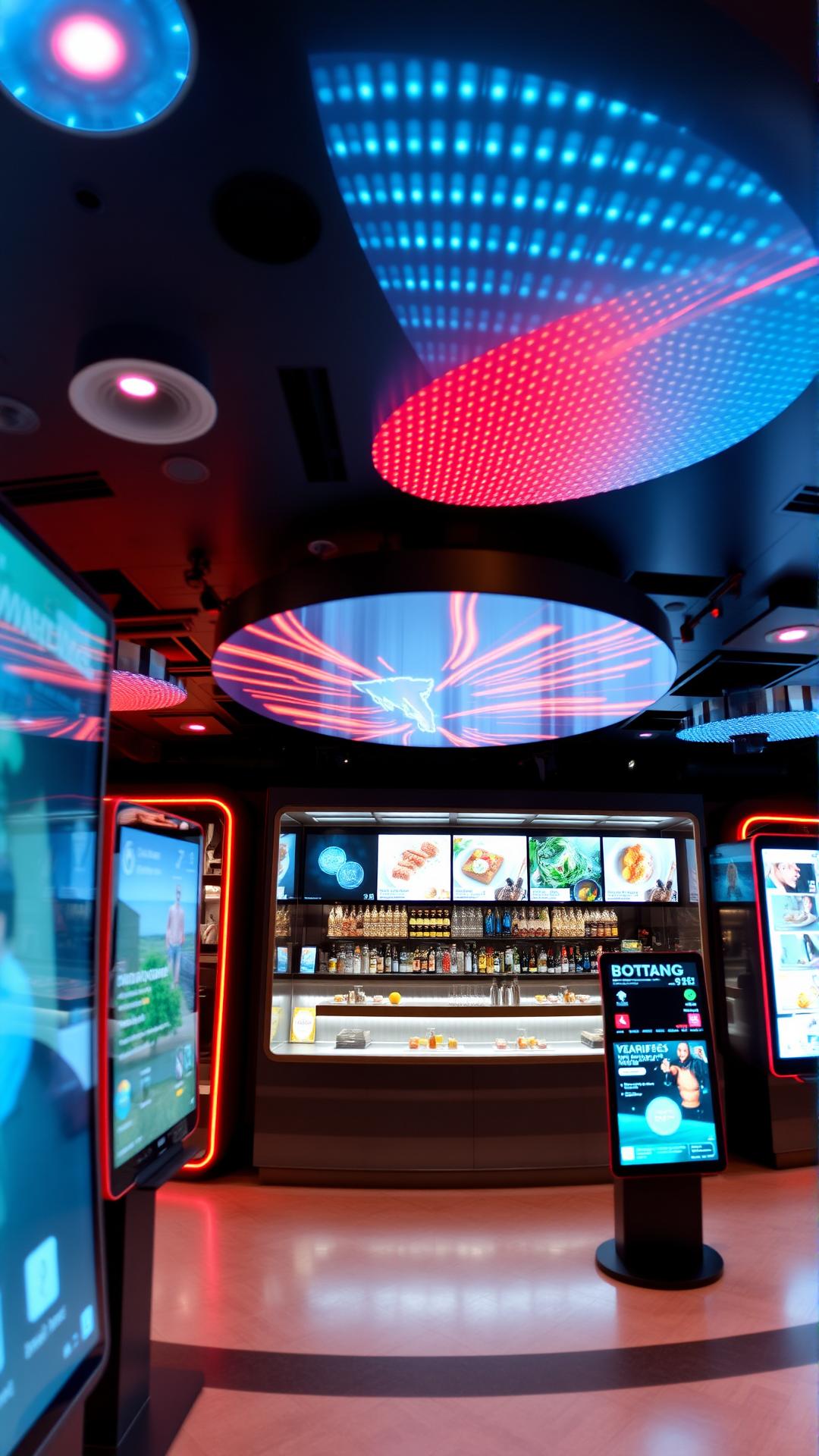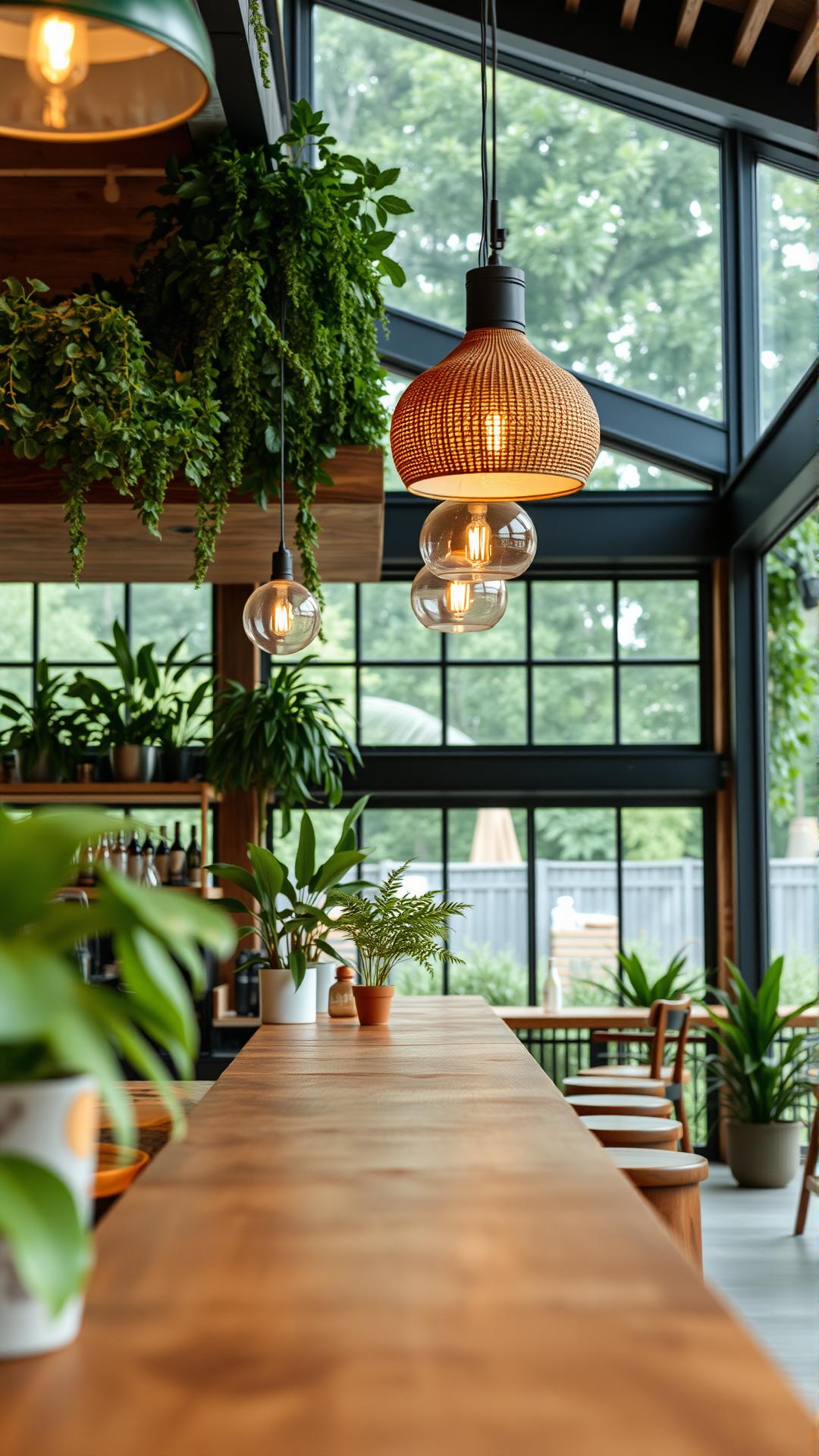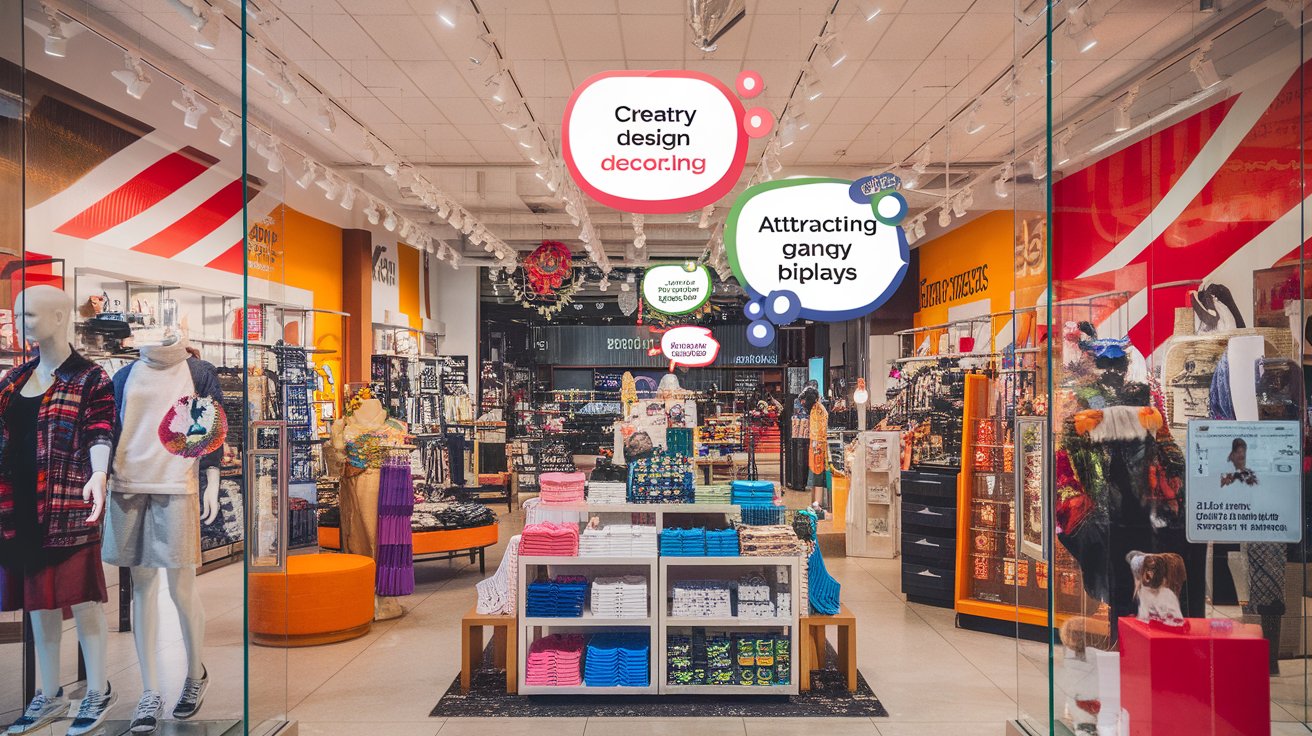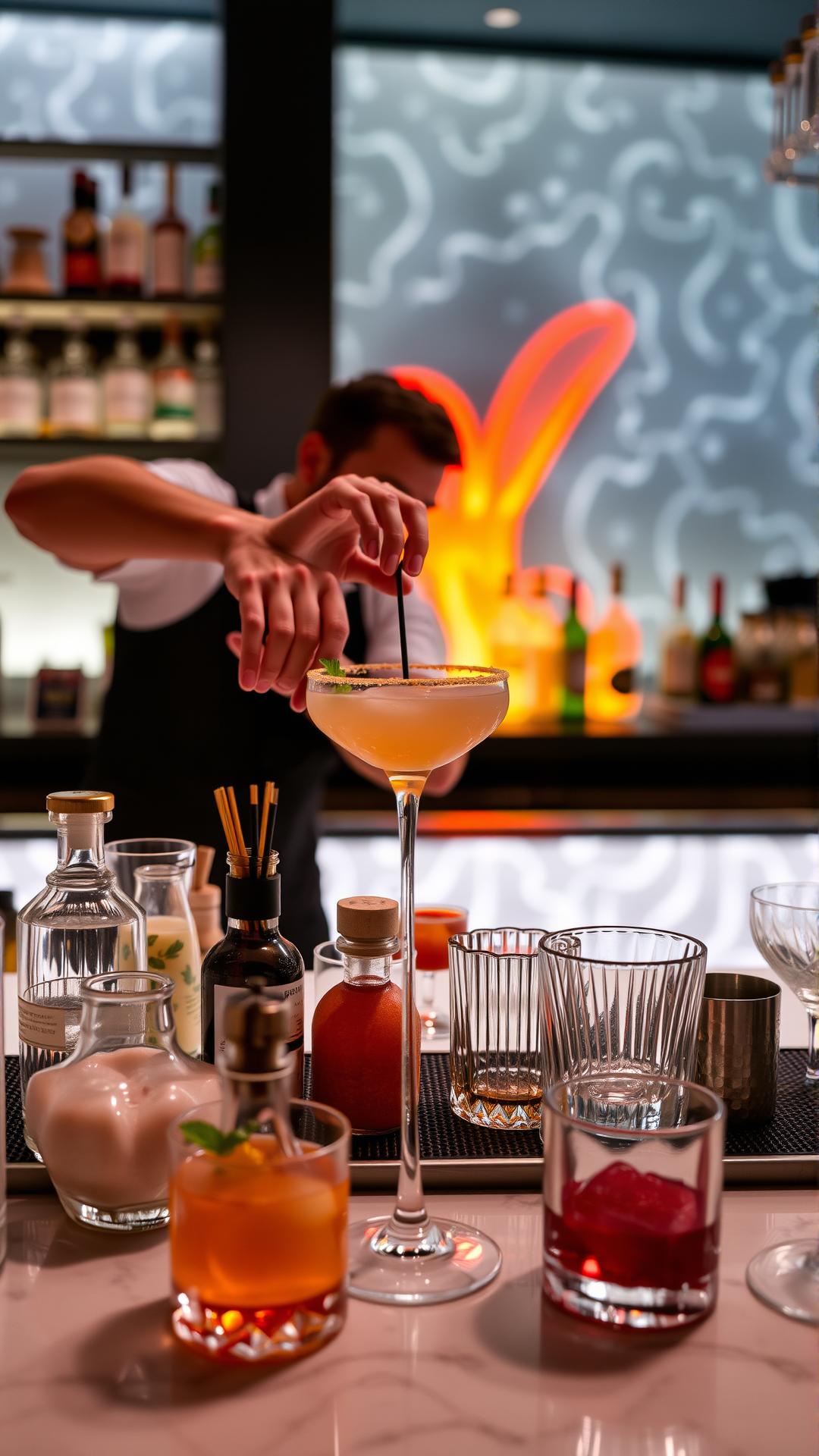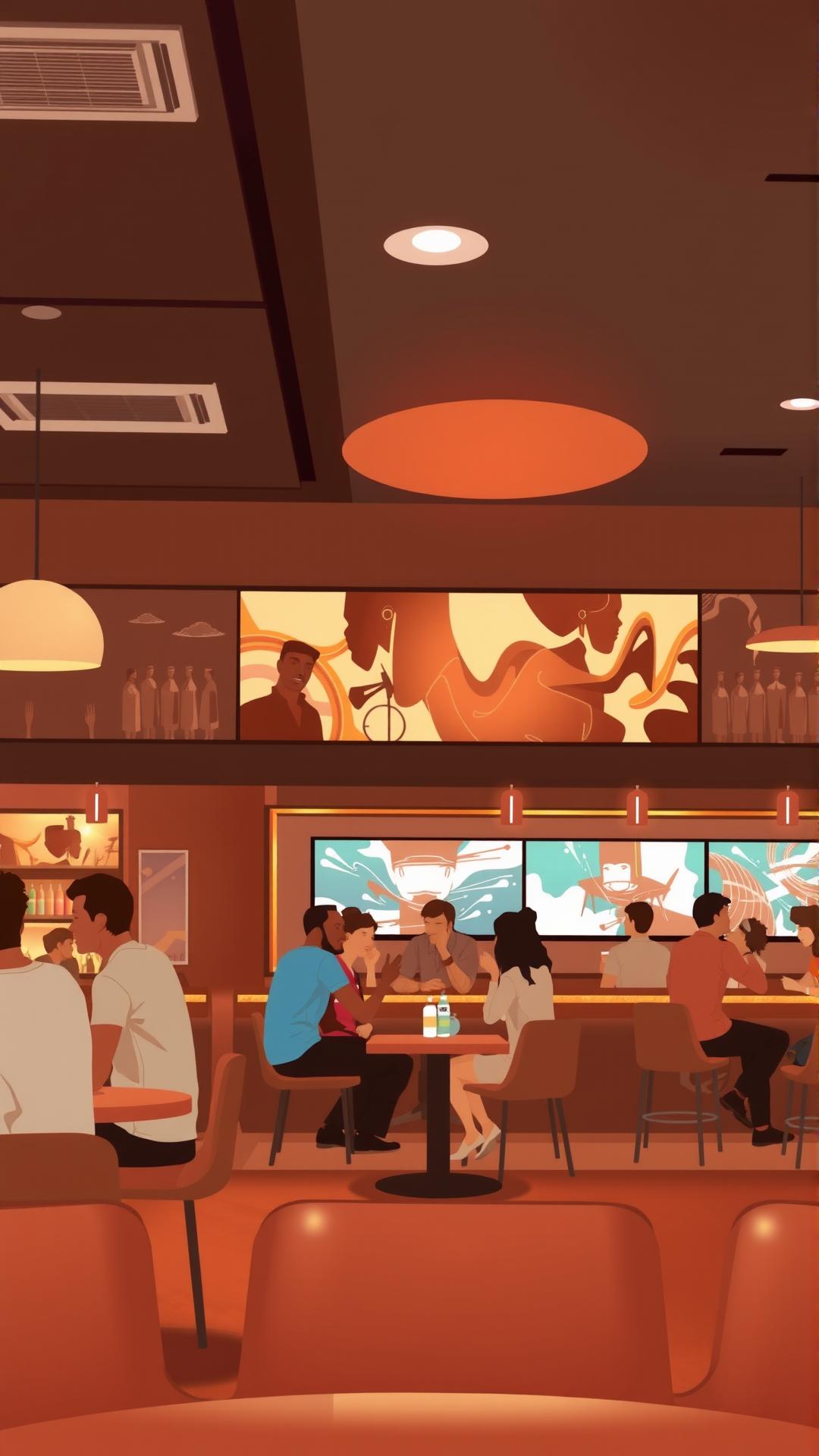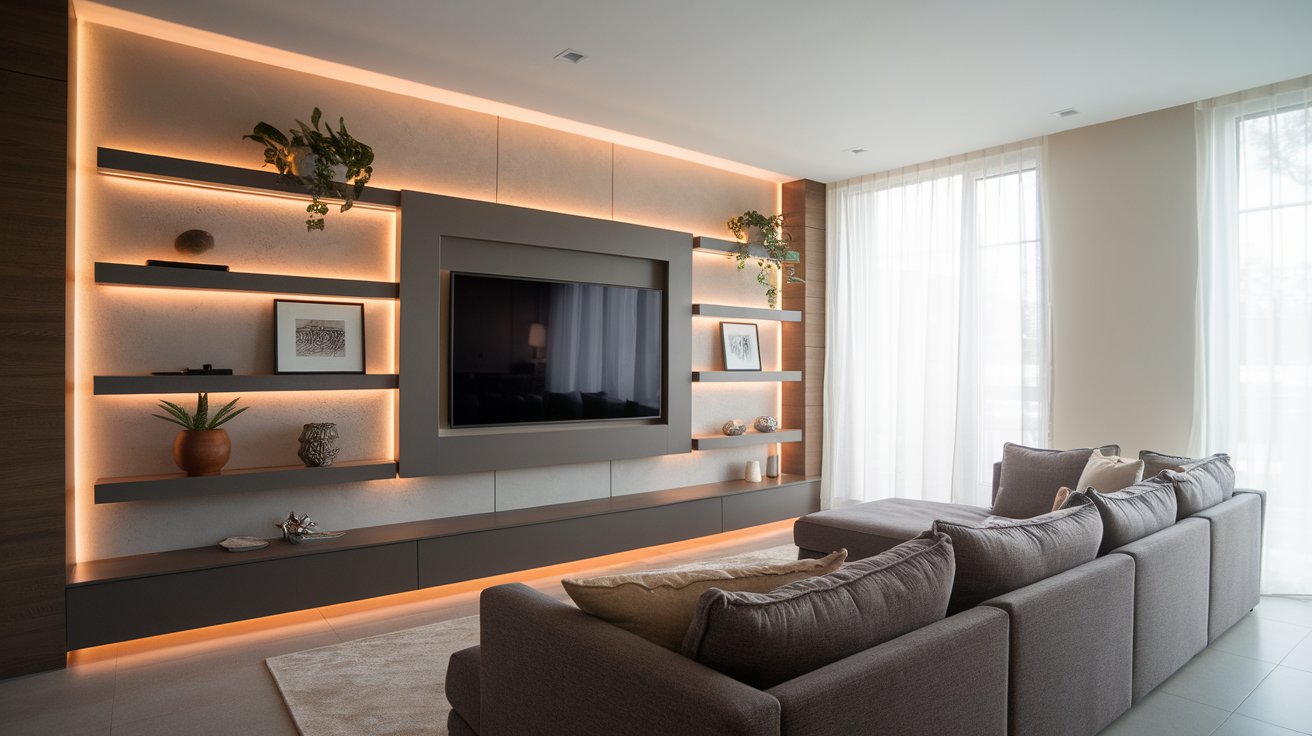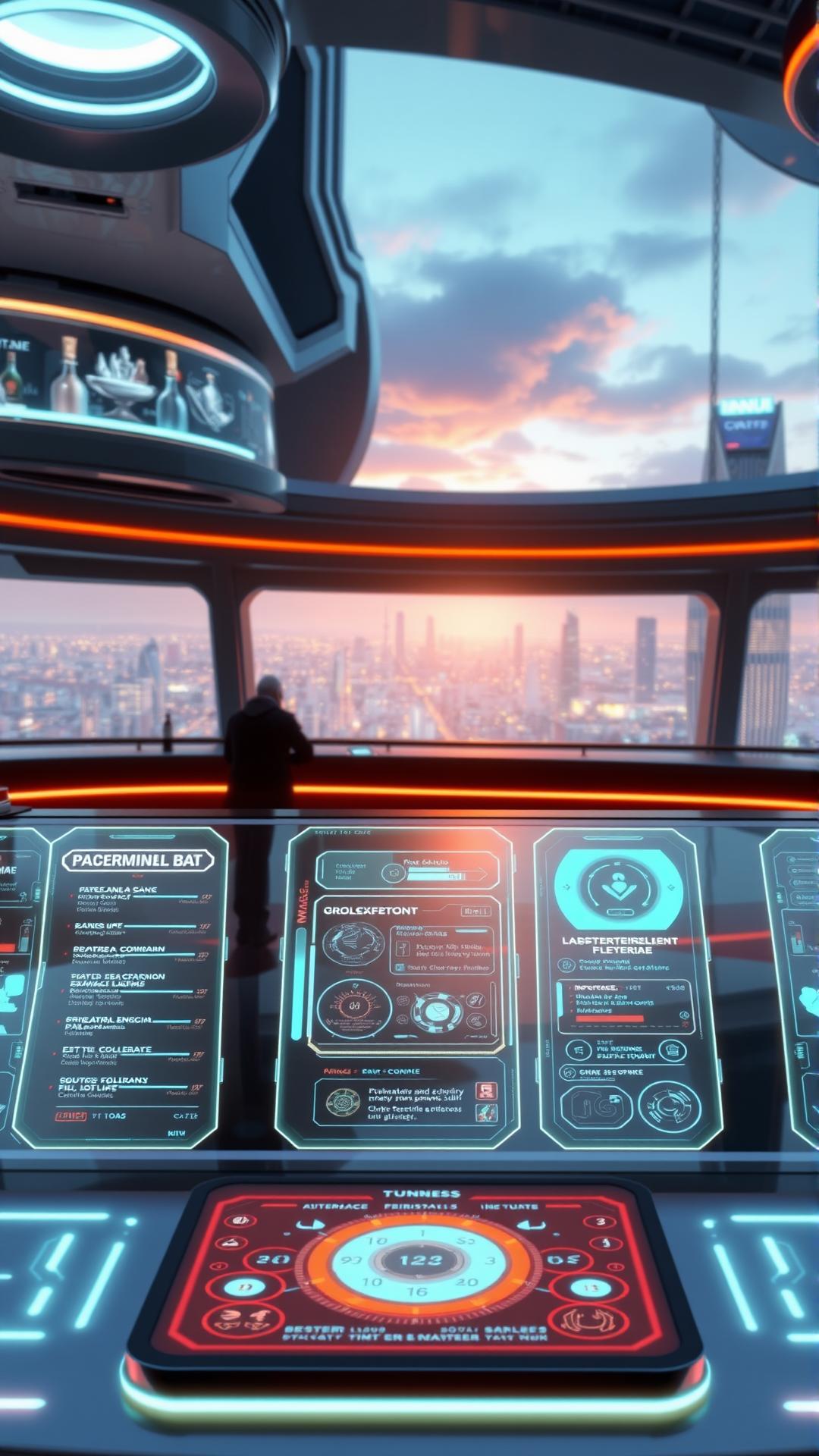Introduction
The concept of a modern bar has evolved significantly, reflecting changes in cultural trends and technological advancements. Today’s bars are not just places to socialize and enjoy drinks; they are immersive experiences that blend aesthetics with functionality. With a focus on innovation, these venues create atmospheres that appeal to a diverse clientele, making use of modern design principles and technology integration. This article examines the latest trends in bar concepts, emphasizing how features like interactive elements, smart technology, and bespoke cocktails redefine customer expectations.
In an increasingly tech-driven society, bars have become laboratories for creativity, pushing boundaries and redefining the social gathering space. From automated drink dispensers to virtual reality experiences, modern bar concepts offer a unique twist on traditional enjoying experiences. As we delve into the heart of these contemporary establishments, we will explore key elements like sustainable practices, personalized design, and seamless service innovations that capture the essence of today’s vibrant nightlife.
The Essence of Modern Bar Design
Modern bar design encapsulates a blend of aesthetics and functionality, catering to the diverse tastes of a contemporary clientele. At the heart of this approach lies an emphasis on creating an inviting atmosphere that draws guests in while fostering social interaction. Key components that define modern bar design include layout, materials, lighting, and design elements which create a distinctive character.
The layout of a modern bar is crucial in promoting engagement and accessibility. An open floor plan invites movement and conversation, while strategically placed seating arrangements foster intimacy among patrons. Comfortable seating options, such as plush bar stools or cozy lounge areas, encourage guests to linger and enjoy their experiences. Flexibility is also essential; modular furniture that can be rearranged accommodates both intimate gatherings and larger crowds, allowing the venue to cater to varying group sizes.
Material selection is another vital aspect of modern bar design. A mix of traditional and contemporary materials creates a dynamic environment. Wood, metal, and stone can be combined to foster a warm ambiance, while sleek glass elements may add a touch of sophistication. Incorporating sustainable materials resonates with today’s eco-conscious consumers, reflecting a commitment to environmental responsibility.
Lighting plays a pivotal role in shaping the mood and flow of a bar. Warm, ambient lighting creates an inviting atmosphere, while strategically placed accent lighting highlights design features and enhances the overall aesthetic. Incorporating the latest lighting technology, such as LED fixtures or programmable lighting systems, allows for dynamic shifts in ambiance, depending on the vibe of the evening or the specific event occurring within the venue.
Design elements are key in giving a modern bar its unique identity. From artwork to installations, these features contribute to the narrative of the space. Themes can be utilized to evoke specific emotions or experiences, while interactive installations can engage patrons in an immersive way. By embracing local culture and influences, a bar can establish a strong connection with its community, appealing to both locals and visitors alike.
Modern bar design intertwines aesthetic choices with functional elements to create spaces that are not only visually appealing but also enhance the customer experience. Balancing comfort, style, and practicality ensures that a modern bar remains an attractive destination for a diverse clientele.
Technology Integration in Bars: Enhancing Customer Experience
The bar industry is undergoing a tech revival, where creative methods are reshaping the way customers interact with their environment. By integrating digital systems into the core of bar management, establishments are improving guest experiences while simplifying procedures. These innovations not only attract technology-oriented visitors but also boost productivity in service operations, proving vital in a rapidly moving setting.
Smart Ordering Systems
One of the most significant disruptions in modern bars is the implementation of smart ordering systems. Patrons can now use their smartphones or tablets to browse menus, place orders, and even make payments without the need for traditional table service. This not only reduces wait times but allows customers to engage with the venue at their own pace. Many establishments utilize QR codes placed strategically around the bar that link to digital menus, ensuring that the ordering process is seamless and user-friendly.
Tabletop Technology
Tablet-based systems integrated into tables offer an interactive experience, enabling customers to explore drink options, read reviews, or even watch videos about the cocktails being prepared. These devices often allow guests to play games, creating a more engaging atmosphere while they await their orders. Additionally, they can serve as a platform for upselling, enhancing the overall profitability of the venue while offering customers a unique and personalized experience.
Augmented Reality (AR) Experiences
Augmented reality is emerging as a captivating way to lure patrons into exploring the menu. By using AR applications, customers can point their smartphones at their drinks to see animated visuals of ingredients, pairings, or cocktail preparation techniques. This not only informs but also entertains, adding an immersive component to the drinking experience. AR can even facilitate virtual tastings or themed gaming nights, enhancing customer engagement and loyalty.
Inventory and Management Software
Beyond customer interaction, tech integration extends to back-end operations. Smart inventory tracking systems utilize sensors and automated inventory management software to help bars monitor stock levels in real-time. This reduces waste and enhances efficiency by streamlining ordering processes. Predictive analytics can forecast demand based on current trends and consumer behavior, allowing bar managers to optimize stock and reduce costs without sacrificing availability.
In this evolving landscape, technology proves to be more than a mere convenience; it becomes a key player in defining the modern bar experience. By embracing such innovations, bars position themselves not only as places to socialize but as hubs of creativity and innovation, catering to a diverse clientele while maintaining operational excellence.
Sustainability in Modern Bars: Eco-Friendly Practices and Sourcing Innovations
The bar industry is undergoing a transformative shift, increasingly prioritizing sustainability to meet the expectations of conscientious consumers. The integration of eco-friendly practices into the modern bar experience reflects a growing awareness of environmental issues and the need for a sustainable approach in food and beverage operations.
Emphasizing Eco-Friendly Practices
Bars are adopting various eco-friendly initiatives that not only appeal to patrons but also contribute to the preservation of the planet. Many establishments are now implementing waste reduction strategies, including composting organic materials and recycling glass and plastic. These practices help in significantly reducing landfill contributions. Some bars are also utilizing energy-efficient lighting and equipment to minimize energy consumption, thus lowering their carbon footprint.
Water conservation has become a priority for many venues, with systems in place to recycle and filter water used in their operations. Rainwater harvesting is also being explored as a method to ensure ample water supply without overexploiting local resources. These initiatives create a more sustainable operational model, fostering a culture of environmental responsibility within the industry.
Sustainable Ingredient Sourcing
When sourcing ingredients, modern bars are increasingly prioritizing local and organic products. By collaborating with local farmers and suppliers, bars can reduce transportation emissions and promote community sustainability. This local sourcing not only ensures fresher ingredients but also supports local economies and businesses. Furthermore, sustainable spirit brands and breweries are gaining traction, as consumers become more aware of production practices and the environmental impact of their choices.
Seasonal ingredients are also gaining popularity in bar menus, allowing for a dynamic drink selection that adheres to nature’s rhythms. This practice enables bartenders to be more creative while ensuring that their offerings are environmentally responsible. For example, many bars are infusing their cocktails with herbs and fruits that are locally sourced and in season, which enhances both flavor and sustainability.
As the demand for sustainable practices intensifies, modern bars are at the forefront of this movement by merging responsibility with innovation. The integration of eco-conscious measures not only improves operational efficiency but also enhances the overall customer experience by appealing to the growing demographic of environmentally-aware patrons. In this landscape, the commitment to sustainability is not merely a trend; it is a fundamental aspect of a modern bar’s identity.
Craft Cocktails and Mixology Trends
Signature Drinks in the Modern Bar Scene
The modern bar experience is increasingly defined by the art of craft cocktails and expert mixology. As patrons seek out unique and memorable drinking experiences, bars must rise to the occasion by showcasing innovative drink concepts. Craft cocktails have gained significant traction, appealing to discerning clientele who crave quality over quantity. This trend is characterized by the meticulous selection of premium spirits, fresh ingredients, and the use of artisanal methods.
At the heart of this phenomenon is the mixologist, a highly skilled bartender who blends creativity with technical prowess to produce signature drinks that captivate the senses. These professionals often undergo extensive training, exploring the chemistry of flavor combinations, tapping into culinary techniques, and experimenting with unconventional ingredients. This has led to a unique fusion of food and drink that pushes the boundaries of traditional cocktail making.
Creative Ingredients and Techniques
Bars are now embracing innovative techniques such as sous-vide infusions, barrel-aging, and molecular gastronomy to elevate their cocktail menus. These methods not only enhance flavors but also add an element of surprise for the consumer. For instance, cocktails can be served as foams, gels, or even in unexpected vessels, creating a multisensory experience that engages patrons on a deeper level.
The trend towards sustainability, emphasized in the previous chapter, dovetails beautifully with the craft cocktail movement. Many bars are now sourcing local and seasonal ingredients, encouraging patrons to enjoy drinks that are not only delightful but also environmentally responsible. For example, using hand-picked herbs or locally distilled spirits not only reduces the carbon footprint but also celebrates regional flavors, creating a narrative behind every drink.
With the rise of non-alcoholic craft cocktails, or “mocktails,” has expanded the definition of mixology, making it inclusive for all. This trend caters to health-conscious consumers and those opting for a sober lifestyle, ensuring everyone can enjoy a sophisticated beverage while socializing. This innovative approach to beverage crafting not only attracts diverse audiences but also allows bars to develop a reputation for their creativity and inclusivity.
The craft cocktail and mixology trend exemplifies how modern bars are redefining the drinking experience. By embracing creativity, sustainability, and inclusivity, they are not only appealing to the current generation of consumers but setting new standards for what a bar can be.
Creating Inclusive Atmospheres
Catering to Diverse Audiences in Modern Bar Environments
In the context of modern bar experiences, creating inclusive atmospheres is not merely a trend but a necessity. As society grows more diverse, bars must adapt their environments to be welcoming to a wide range of patrons, including those from various cultural, social, and accessibility backgrounds. Inclusivity serves as a bridge to foster connections among individuals who might otherwise remain isolated in their preferences.
One effective approach is to design a versatile space that can accommodate different needs. This includes accessible entries for individuals with mobility challenges, designated areas for families with children, and consideration for sensory-sensitive individuals through the use of sound-absorbing materials and adjustable lighting. By enhancing physical accessibility, bars can ensure that everyone feels welcome and valued.
The drink menu also plays a pivotal role in fostering inclusivity. Offering a range of alcoholic and non-alcoholic options, including mocktails and specialty drinks that cater to various dietary restrictions, can significantly impact the overall experience. Clear labeling of ingredients, potential allergens, and alcohol content further empowers guests in their selections, fostering a sense of trust and comfort.
Programming events that showcase diverse cultures or interests can draw in varied audiences and encourage community building. Themes such as international nights, language exchange events, or art showcases can spur interesting conversations and enhance social interaction among patrons. Such initiatives not only diversify the clientele but also create an environment ripe for exchange and education.
Technology can also contribute to inclusivity in modern bars. Implementing mobile apps for reservations or drink orders can help those who may feel overwhelmed in crowds. Additionally, providing translation features or visual aids for multilinguistic patrons can streamline communication, making the establishment feel even more accessible.
The modern bar’s ability to create an inclusive atmosphere reflects its commitment to community. Investing in a welcoming environment that caters to a diverse range of patrons can not only bolster customer satisfaction but also enhance the bar’s reputation and profitability. As the landscape of social drinking continues to evolve, bars that embrace inclusivity will be better positioned to thrive in an increasingly connected world.
The Future of Modern Bars: Tech-Inspired Environments Shaping Consumer Preferences
The modern bar landscape is on the cusp of an extensive transformation driven by technology, design ingenuity, and evolving consumer expectations. As we look towards the future, bars will likely evolve not just as venues for social interaction, but as immersive experiences tailored to tech-savvy patrons seeking connection and convenience.
Integrating Technology and Design
Imagine a bar where augmented reality (AR) enhances not just the drink menu, but the entire atmosphere. Patrons might don smart glasses that allow them to experience customized projections of their favorite cocktails being prepared, understand the origins of spirits through interactive displays, or even enjoy immersive themed environments that change throughout the evening. This interplay between technology and design will create an engaging atmosphere where every visit is a unique experience.
Bars may employ cutting-edge automation, such as robotic bartenders and automated drink dispensers that not only reduce wait times but also offer innovative cocktail mixing capabilities. This shift toward automation does not mean a loss of personal touch; rather, it allows human staff to focus on crafting relationships and delivering exceptional service, elevating the overall experience.
Personalization and Consumer Preferences
As consumer preferences shift towards personalized experiences, bars will likely adopt data-driven strategies to cater to individual tastes. Utilizing algorithms and customer feedback, establishments can suggest personalized drink options or create custom menus based on patrons’ past visits and preferences. Mobile applications may become integral, empowering guests to order ahead, customize their drinks, or even track their favorite cocktail recipes from their tables.
Sustainability will play a pivotal role in this evolution. Modern bars are expected to incorporate eco-friendly practices, from sourcing locally produced ingredients to utilizing biodegradable straws and sustainable serving vessels. This commitment to environmental responsibility will resonate with consumers who prioritize brands that reflect their values, influencing their choice of venue.
The future of modern bars will be defined by a fusion of technology, design, and evolving consumer standards. As boundaries between physical and digital experiences blur, venues will not just serve drinks but craft memorable journeys, making visits a holistic experience where every element is thoughtfully designed and executed. The bar of the future will not merely be a place to unwind; it will be a destination that thrives on interactivity, personalization, and sustainability, meeting the diverse needs of its patrons while paving the way for a new era of social outings.
Conclusions
The modern bar landscape is characterized by an impressive fusion of technology and design, creating memorable experiences for patrons. The integration of smart technology not only enhances customer interaction but also streamlines operations, allowing bar owners to focus more on creativity and service. As we continue to witness evolution in the realm of nightlife, it is evident that investing in innovative concepts can lead to a thriving business that resonates with tech-savvy consumers.
The future of bars lies in their ability to adapt and embrace new trends while retaining the core elements of hospitality and enjoyment. By prioritizing sustainability, personalization, and immersive experiences, modern bars can set themselves apart in a competitive market, ensuring that they remain not only relevant but also essential to our social lives.


